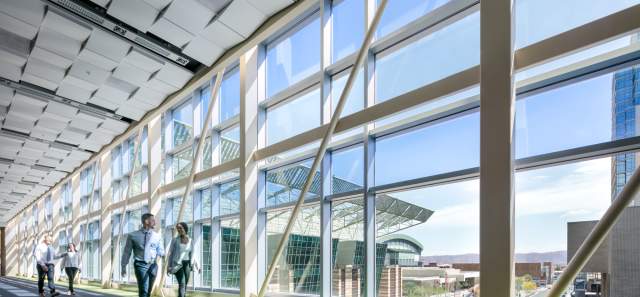How to Expand Inclusivity Efforts Ahead of Your Next Meeting
4 steps planners can take to make meaningful change.
What do you think of when you hear the word “inclusivity” with respect to meetings? Probably adding more women to a panel, designing content that represents the racial diversity of the audience, and having an ADA-compliant setup.
And that’s an excellent start. But truly inclusive meetings go far beyond sticking to a few of the most frequently discussed boxes. Accommodating everyone means planning for diverse ages, religious backgrounds, dietary restrictions, and abilities—among many additional audience-specific considerations.
“You want everyone to feel comfortable, safe, and respected at an event,” explains Jackie Quintyne, conference manager for Waste Management Symposia, based in the Greater Phoenix area. “And unless you can be inclusive of everyone, people don’t have that feeling.”

Jackie Quintyne, conference manager for Waste Management Symposia, based in the Greater Phoenix area.
Refocusing On The Attendee Experience
When it comes to both conference content and the on-site experience, planners must consider the perspective of every single attendee at every step of the process.
Underscoring the importance of thinking outside the box on every detail, Quintyne recounts learning that a fellow industry professional received feedback from an attendee who felt unsafe because no gender-neutral bathrooms were available.
“That’s an awful feeling to have in whatever format it comes, whether it’s not finding your bathroom or not finding food you can eat,” she says. “You want to accommodate everyone’s needs and make everyone feel valued.”
Inclusivity is crucial for conference content, too. Quintyne points to former Michigan Governor Jennifer Granholm, who spoke to her group right after being confirmed as U.S. energy secretary.
“Our female attendees, young professionals, and students were able to look at her and say, ‘That could be me down the road,’” Quintyne explains. “For my older attendees, she was a person who could reflect on the industry’s evolution and inspire them for the next level up. We are always trying to find someone who can represent and connect with as many attendees as possible.”
Next Steps For Planners
Quintyne recommends multiple approaches for planners seeking to build inclusivity and get a “bigger-picture view” of what that means. First, she suggests that planners seek out published information and coursework that’s available through industry associations.
Second, planners can look for additional perspectives —from both within an organization and beyond, including peers. “Talk to your senior and junior counterparts,” she says. “Try to bring in people who represent your diverse audience. You have to get other viewpoints besides your own.”
Third, Quintyne notes that pandemic-related industry shifts have made it easier than ever to collect data from meeting constituents through surveys and other digital tools.
Finally, planners can learn from industry leaders without even picking up the phone: After all, conference websites are often public, and their approaches can inspire new ideas for inclusivity efforts. “There’s a lot of information out there,” she says. “A planner can do just a little bit of research to make their events so much better.”
This story was written and published by Associations Now. For more meetings trends in Phoenix, visit AssociationsNow.com.
Meet In Phoenix
Get the Meetings Newsletter
Stay informed on openings and renovations, what’s new in downtown and more.
Planner Toolkit
We've got photos, maps, planning guides and more for meeting planners and their delegates.
Order A Meeting Planner Guide
Our Meeting & Travel Planner Guide has the details on things to do downtown, the convention center…








